![ACT_10777_2023ADA_1000x600_V1[98][2]](https://pages.ada.org/hubfs/ACT_10777_2023ADA_1000x600_V1%5B98%5D%5B2%5D.png)
Reinforcing
the importance
of fluoride for lifelong dental health
This comprehensive digital resource was created to offer a closer look at the importance of using topical fluoride for caries prevention.
In this white paper, you will learn about:
- Impact of fluoride on dental health
- Importance of lifelong fluoride treatment
- Assessing dental caries risk
- Critical life stages after childhood
- Overview of guidelines and recommendations for all age groups
- Xerostomia
- Exclusive survey results
- Much more!
Featured Content
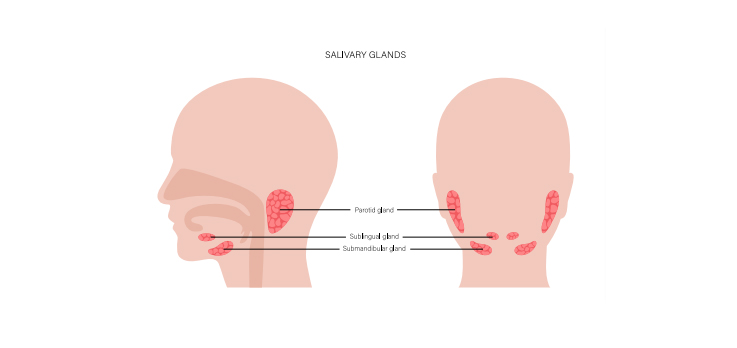
Xerostomia: Understanding causes and treatment options
Dentists need to be fully prepared to act on patients’ behalf to restore comfort and function with xerostomia. This white paper covers the most frequently recognized causes of hyposalivation, the essential role of salivation, keys to patient assessment, and more.

On-demand: Panel explores trends, challenges relating to fluoride access
Are your patients getting adequate levels of fluoride? In this free, September 2021 webinar, a panel of dentist experts discussed fluoride trends and the science relating to fluoride use and caries prevention. This webinar is sponsored by ACT®.

E-book: Emerging fluoride challenges pose risks to caries prevention
This resource explores the impact of fluoride on caries prevention and risks associated with inadequate access to fluoride. This e-book delves into risks to an aging population, xerostomia, and poly-pharmacy considerations.

What are the top 6 homecare tactics to improve patient compliance?
In a recent ADA Vendor Showcase survey of dentists, adherence between visits is best achieved by using a combination of communications tactics—from consistent education to offering product samples to in-office education about fluoride’s benefits to oral health.
ADVERTISEMENT
Featured News
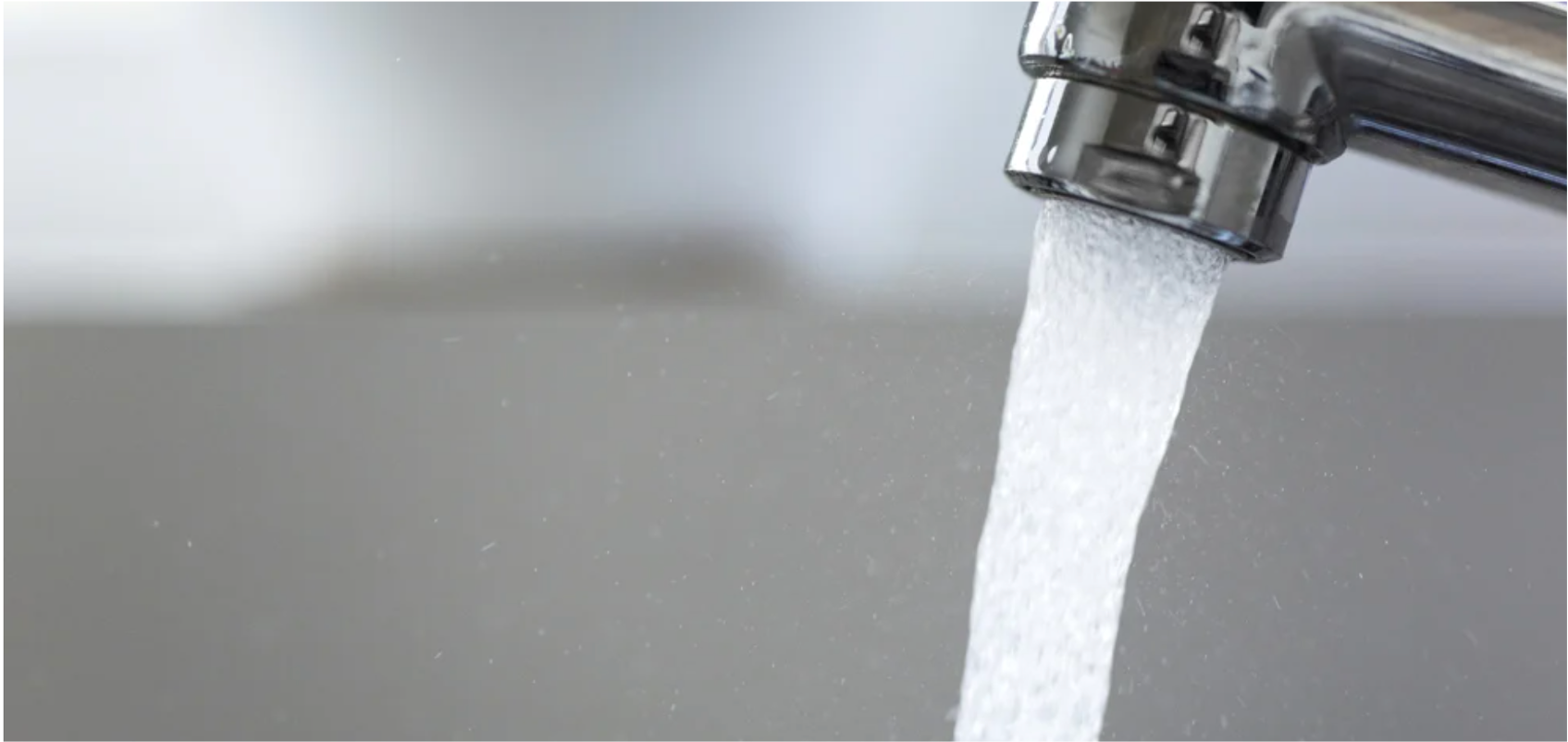
Study: Fluoride exposure does not increase osteosarcoma risk
A case-control study published in the May issue of JADA found exposure to topical or supplemental fluorides did not increase risk of osteosarcoma. Researchers analyzed data from two studies involving a case group with osteosarcoma and a control group with other bone tumors or nonneoplastic conditions, and they found neither topical application of fluoride nor use of fluoride supplements were associated with increased risk of osteosarcoma.

USPSTF releases draft fluoride recommendation
The US Preventive Services Task Force released a draft recommendation urging application of fluoride varnish for children younger than 5 years and recommending oral fluoride supplementation be prescribed for children at least 6 months old if their water supply is not adequately fluoridated, reports HealthDay News. "All children with erupted teeth can potentially benefit from the periodic application of fluoride varnish," the task force said.
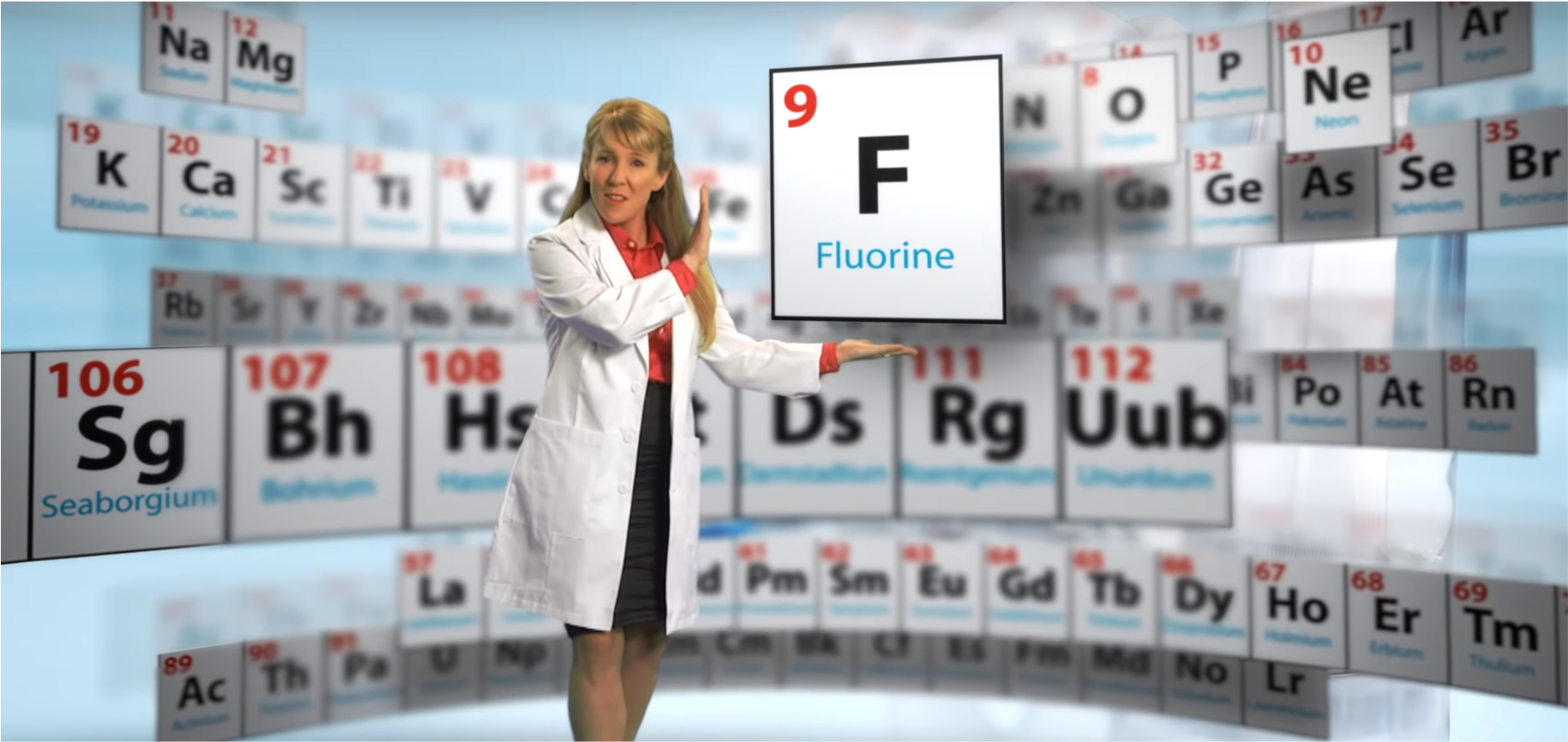
Fluoride: Meet the superhero
of cavity fighting
In this video, Dr. Jane Gillette of the American Dental Association explores the science inside your mouth. More than 75 years of scientific research has consistently shown that: an optimal level of fluoride in community water is safe and effective, and it prevents tooth decay by at least 25% in both children and adults. The Centers for Disease Control and Prevention named community water fluoridation one of 10 great public health achievements of the 20th century.
Get into the ACT®
![AdultsHeroImage[1]-1](https://pages.ada.org/hubfs/AdultsHeroImage%5B1%5D-1.png)
Adult Products
ACT® has a full line of fluoride-powered anticavity mouthwashes for your adult patients that help prevent dental caries and make teeth up to 4x stronger.*
According to the CDC, 91% of adults over the age of 20 have had dental caries.1 Help ensure your patients are getting the fluoride they need to prevent dental caries and protect teeth with the #1 Dentist & Hygienist Recommended Fluoride Brand.† ACT® anticavity rinses are safe, gentle and formulated with the maximum concentration of fluoride available without a prescription.‡ The pH-balanced sodium fluoride formula remineralizes teeth and protects them from acid erosion. Get access to free coupons, sample offers and patient materials today!
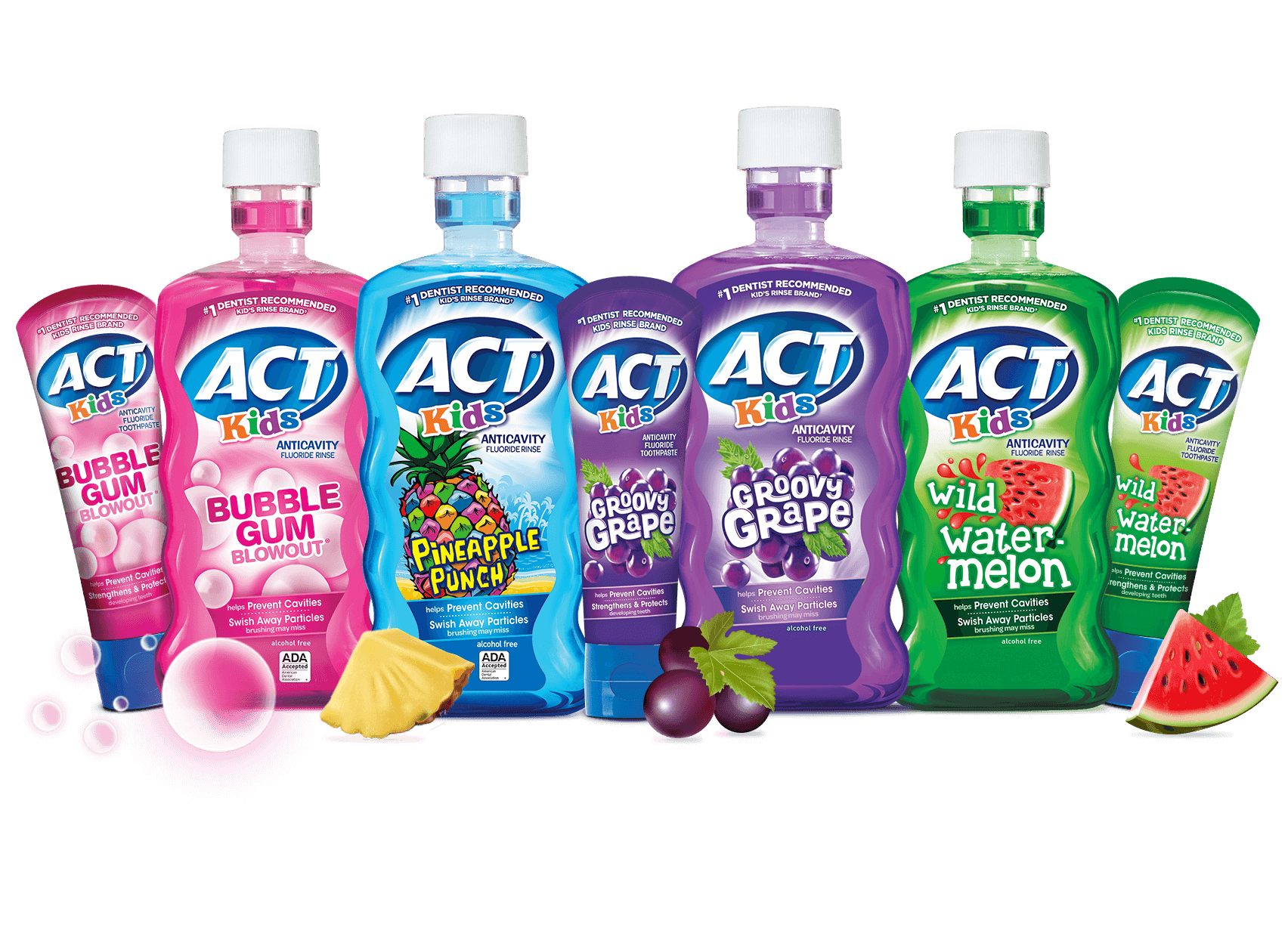
Kids Products
As the #1 Dentist & Hygienist Recommended Kids Rinse Brand†, ACT® has great-tasting complementary flavors of anticavity mouth rinses and toothpastes to help protect and strengthen teeth.
FACT: More than 45% of American children between the ages of 2 and 19 experience tooth decay in their permanent teeth.2 ACT® knows it’s important to develop healthy dental routines at an early age - that’s why they offer a full suite of easy-squeeze fluoride rinses for ages 6+ to help prevent 40% of future cavities3 and build up to 4x stronger teeth.* In addition to brushing and flossing, your pediatric patients can get healthier, happier smiles by rinsing for just 1 minute, 1x a day, making it easy for kids to incorporate ACT® into their daily routine. And, for ages 2+, ACT® also offers matching anticavity toothpaste flavors kids love, but cavities don’t. Get helpful patient resources and coupons today!
.png)
Dry Mouth Products
Recommend ACT® Dry Mouth Anticavity Mouthwash for soothing comfort, preferred taste** and fluoride protection.
Over 500 medications list dry mouth as a common side effect. Your patients may be experiencing symptoms but may not be aware that the decrease in saliva puts them at greater risk of tooth decay. ACT® Dry Mouth Anticavity Mouthwash contains 2 hydrating polymers and 7 effective moisturizers to relieve dry mouth symptoms. It’s also formulated with sodium fluoride to help prevent dental caries and strengthen teeth. Dry mouth sufferers also prefer the taste of ACT® Dry Mouth Anticavity Mouthwash over Biotène® Dry Mouth Oral Rinse**. Recommend ACT® mouthwash for at-home use, or for comfort on-the-go, patients can enjoy great-tasting lozenges and chewing gums††. Find more information on dry mouth and how you can help with ACT® today!
Disclaimers
*In lab studies vs. rinsing with water (baseline). Only applies to 0.05% fluoride rinse formulas.
†Among OTC mouth rinses.
‡Only applies to 0.05% fluoride rinse formulas.
**ACT® Dry Mouth aids in the prevention of dental caries and is specially formulated to soothe and moisturize dry mouth. Biotène® relieves the symptoms of dry mouth, moisturizes and soothes oral irritation, and lubricates oral dryness. Biotène® is a registered trademark of GlaxoSmithKline Consumer Healthcare LLC.
††Chewing gum and lozenges do not contain fluoride.
- CDC/NCHS, National Health and Nutrition Examination Survey, 2011-2012. http://www.cdc.gov/nchs/data/databriefs/db197_table.pdf#1.
- Fleming E, Afful J. Prevalence of total and untreated dental caries among youth: United States, 2015-2016. NCHS Data Brief, no 307. Hyattsville, MD: National Center for Health Statistics. 2018.
- Heifetz, S.B., et al. (1982). A comparison of the anticaries effectiveness of daily and weekly rinsing with sodium fluoride solutions: final results after three years. Pediat Dent. 4(4):300-3.
Xerostomia causes offer clues on ways to manage it
An estimated 10% of the general population experience the persistent oral dryness of xerostomia, and more than 25% of elderly population struggle with daily oral dryness.1-5
Some of the common symptoms of xerostomia include:
- trouble tasting, chewing, swallowing or speaking;
- a sticky, dry feeling in the mouth or throat;
- cracked lips;
- a dry, rough tongue;
- mouth sores; and
- burning in the mouth or throat6
Medication use is the most common cause of dry mouth. More than 500 common prescription drugs cite dry mouth as a side effect. Conditions such as diabetes, Sjögren’s syndrome and other autoimmune diseases can cause xerostomia, as can such treatments as radiation and chemotherapy. 5
Xerostomia can lead to gingivitis, caries7 and bad breath.
To help make patients experiencing xerostomia more comfortable, there are rinses available that contain hydrating oral moisturizers and fluoride to help combat development of caries.
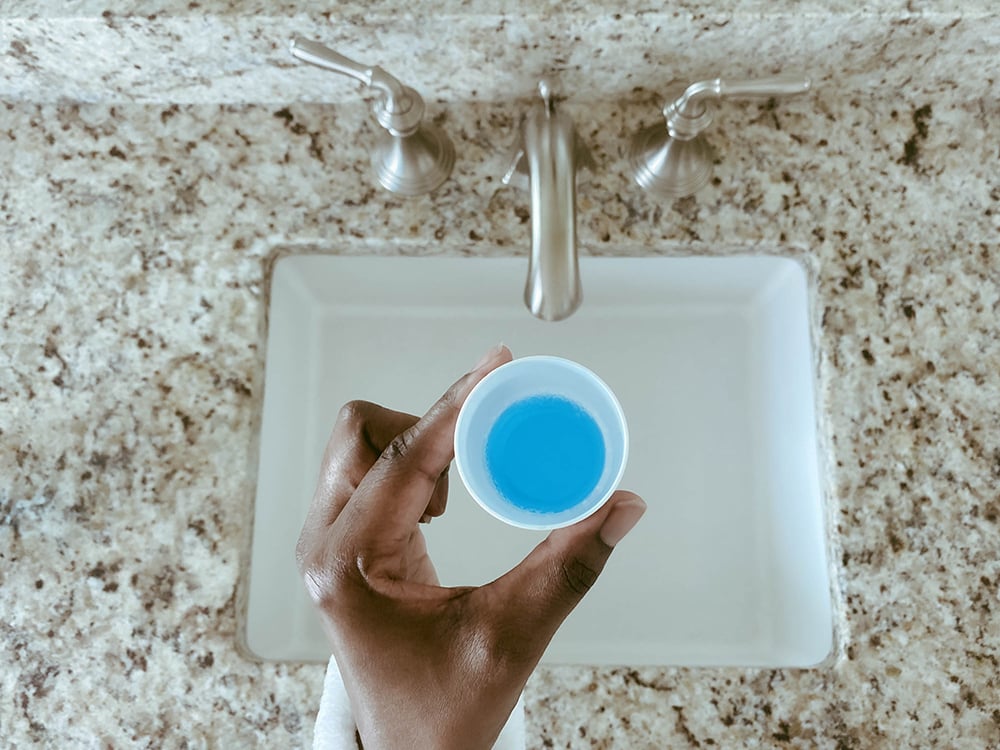
References
1Guggenheimer, J., & Moore, P.A. (2003). Xerostomia: etiology, recognition and treatment. J Am Dent Assoc, 134(1): 61-9. Link: https://pubmed.ncbi.nlm.nih.gov/12555958/
2Atkinson, J.C., Grisius, M., & Massey, W. (2005). Salivary hypofunction and xerostomia: diagnosis and treatment. Dent Clin North Am, 49(2): 309-26.Link: https://pubmed.ncbi.nlm.nih.gov/15755407/
3Fox, P. C. (2008, Feb). Xerostomia: Recognition and management. Dent Assist. Sep-Oct 2008;77(5):18, 20, 44-8; quiz 50-1. Link: https://pubmed.ncbi.nlm.nih.gov/18982854/.
4Al-Kholy, E.A., et al. (2014). The relationship between salivary levels of cortisol, chromogranin A (CgA) and xerostomia in post-menopausal women. Tanta Dental Journal, 11: 161-168.
5Douglas, L.M. (2009). Managing xerostomia. Vital, 6: 32-34.
6U.S. Department of Health and Human Services, National Institutes of Health, National Institute of Dental and Craniofacial Research. (2017). Dry mouth (xerostomia). NIH Publication, 17-3174.
7Mouth Healthy. (2018). 4 reasons water is the best beverage for your teeth. Link: https://www.mouthhealthy.org/nutrition/water-best-beverage.
Quick facts: xerostomia
This practical patient information sheet from ACT® offers your patients facts about xerostomia, its causes and a few ways to manage common symptoms.
How to help patients between hygiene appointments
The COVID-19 pandemic underscores the importance of a good home-care regimen that includes brushing (twice a day), cleaning between teeth (daily) and finishing with a fluoride mouth rinse to deliver fluoride in places brushing may miss.
The primary goal of a diligent home-care practice is to disrupt development of plaque to prevent tooth decay, according to Daniel Rodda, D.D.S., owner of Oasis Dental Care in Flagstaff, Arizona, in an article published by Healthline.
Some tactics to coach your patients include:
- consider using an electric toothbrush;
- brush twice a day;
- clean between teeth once a day;
- and use a fluoride mouth rinse to strengthen teeth, help prevent cavities and deliver fluoride in places that brushing may miss.
“The oral microbiome is a key component of the immune system,” Mark Burhenne, D.D.S., founder of AsktheDentist.com, told Healthline. “Mouthwashes high in alcohol or toothpastes with bactericidal components in them, like triclosan or other antibacterial ingredients, can greatly disrupt the health of the oral microbiome.”
Mouth Healthy, from the American Dental Association, also has patient educational materials, including this video on brushing teeth.
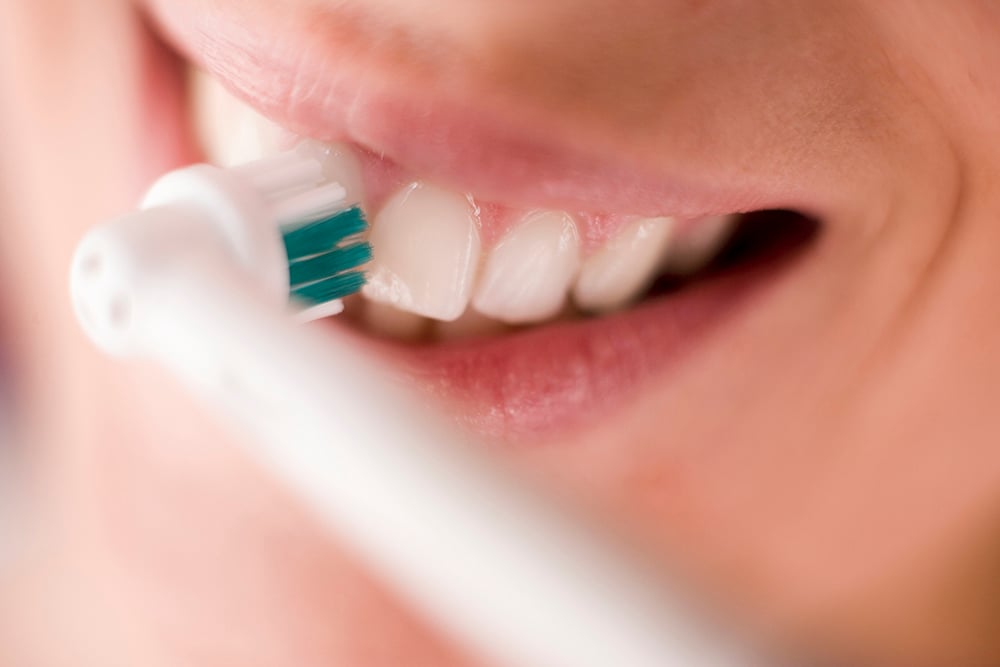
Why adults need fluoride
As we age, the risk of getting cavities increases. Getting enough fluoride is essential for helping to combat cavity-causing culprits.
Fluoride facts
Over time, the foods you eat, dental work and conditions like dry mouth increase your chances of getting a cavity. That means fluoride is essential to dental health as you get older.
Swish with these fluoride resources
Fluoride clinical guidelines
These ADA guidelines were created to aid dental professionals in clinical decision making and help incorporate evidence gained through scientific investigation into patient care.
Fluoride mouth rinses
Water fluoridation is not the only form of fluoride delivery that is effective in preventing tooth decay in people of all ages, according to the Centers for Disease Control and Prevention.
This resource offers an overview of fluoride mouth rinses.
ADA Seal of Acceptance
The ADA Seal of Acceptance program is a gold standard in evaluating efficacy and safety of dental products. This resource offers a listing of products earning the ADA Seal of Acceptance.
ADA public programs: Fluoride in water
A bevy of fluoride topic resources from ADA that explores water fluoridation programs and the benefits of fluoride to reduce tooth decay.
Fluoride: topical and systemic supplements
Oral Health Topics is a section on ADA.org that explores clinically relevant and evidence-based science. This extensive resource reviews topical and systemic supplements of fluoride and offers members easy access to guidelines, ADA policies and other resources.
Study examines fluoride levels in bottled water
PracticeUpdate (registration required): Analysis of 92 different brands of bottled water revealed that only 2 contained >0.7 ppm fluoride, the concentration added to commercial public (tap) water for optimum caries prevention.
Topical fluoride with education effectively prevents root caries
PracticeUpdate (registration required): The adoption of effective root caries prevention strategies by the dental profession coupled with public education can reduce the incidence of root caries.
Innovations: New community water fluoridation system is ‘game-changer'
Sodium fluorosilicate tablet system, a community water fluoridation system considered the first advancement in water fluoridation technology in decades, recently received NSF Standard 61 approval.
ADVERTISEMENT



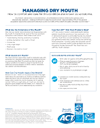
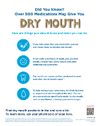

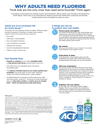
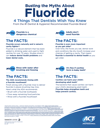
![ACT_10777_2023ADA_970x250_V1a[71][1] ACT_10777_2023ADA_970x250_V1a[71][1]](https://pages.ada.org/hubfs/ACT_10777_2023ADA_970x250_V1a%5B71%5D%5B1%5D.jpg)